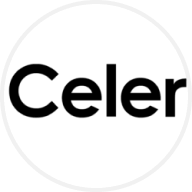
Bancor price

Bancor market info
Market cap = Circulating supply × Last price

BNT calculator


Bancor price performance in USD
Popular Bancor conversions
| 1 BNT to USD | $0.36820 |
| 1 BNT to EUR | €0.33536 |
| 1 BNT to PHP | ₱21.0459 |
| 1 BNT to IDR | Rp 6,197.61 |
| 1 BNT to GBP | £0.28773 |
| 1 BNT to CAD | $0.51896 |
| 1 BNT to AED | AED 1.3524 |
| 1 BNT to VND | ₫9,571.09 |
About Bancor (BNT)
- Official website
- White Paper
- Github
- Block explorer
Bancor FAQ
Bancor is an ecosystem of decentralized, open-source protocols designed to provide liquidity and trading opportunities for small market value tokens. By leveraging blockchain technology, Bancor enables seamless and efficient transactions, creating a robust liquidity infrastructure for various cryptocurrencies.
Holding BNT, the native token of Bancor, comes with several benefits. Firstly, BNT allows users to actively participate in the Bancor ecosystem. Additionally, BNT holders have the opportunity to earn passive income through staking and participating in governance activities. By holding BNT, users can have a stake in shaping the future of Bancor and the broader DeFi ecosystem.
Easily buy BNT tokens on the OKX cryptocurrency platform. OKX’s spot trading terminal includes the BNT/USDT trading pair.
You can also swap your existing cryptocurrencies, including XRP (XRP), Cardano (ADA), Solana (SOL), and Chainlink (LINK), for BNT with zero fees and no price slippage by using OKX Convert.
Monitor crypto prices on an exchange
ESG Disclosure
BNT calculator














Socials